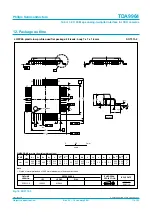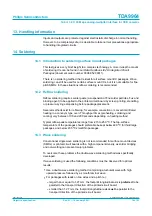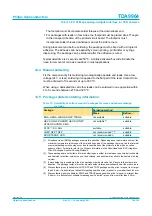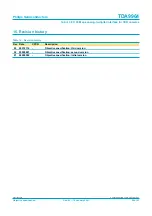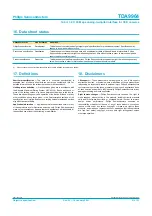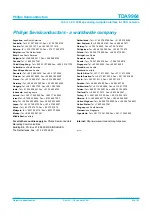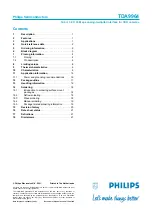
Philips Semiconductors
TDA9964
12-bit, 3.0 V, 30 Msps analog-to-digital interface for CCD cameras
Objective specification
Rev. 03 — 16 January 2001
16 of 23
9397 750 07918
© Philips Electronics N.V. 2001. All rights reserved.
11.1 Power and grounding recommendations
When designing a printed-circuit board for applications such as PC cameras,
surveillance cameras, camcorders and digital still cameras, care should be taken to
minimize the noise.
For the front-end integrated circuit, the basic rules of printed-circuit board design and
implementation of analog components (such as classical operational amplifiers) must
be respected, particularly with respect to power and ground connections.
The following additional recommendation is given for the CDS input pin(s) which is
(are) internally connected to the programmable gain amplifier:
The connections between CCD interface and CDS input should be as short as
possible and a ground ring protection around these connections can be beneficial.
Separate analog and digital supplies provide the best solution. If it is not possible to
do this on the board, the analog supply pins must be decoupled effectively from the
digital supply pins. If the same power supply and ground are used for all the pins, the
decoupling capacitors must be placed as closely as possible to the IC package.
To minimize the noise caused by package and die parasitics in a two-ground system,
the following recommendation must be implemented:
All analog and digital supply pins must be decoupled to the analog ground plane.
Only the ground pin associated with the digital outputs must be connected to the
digital ground plane. All other ground pins should be connected to the analog ground
plane. The analog and digital ground planes must be connected together at one point
as closely as possible to the ground pin associated with the digital outputs.
The digital output pins and their associated lines should be shielded by the digital
ground plane, which can then be used as return path for digital signals.
















